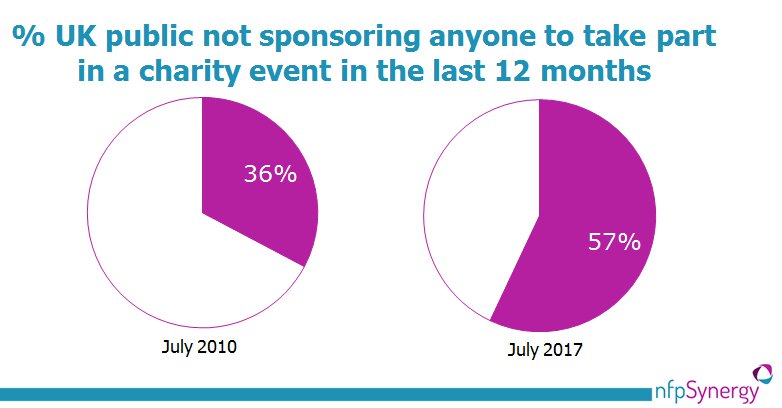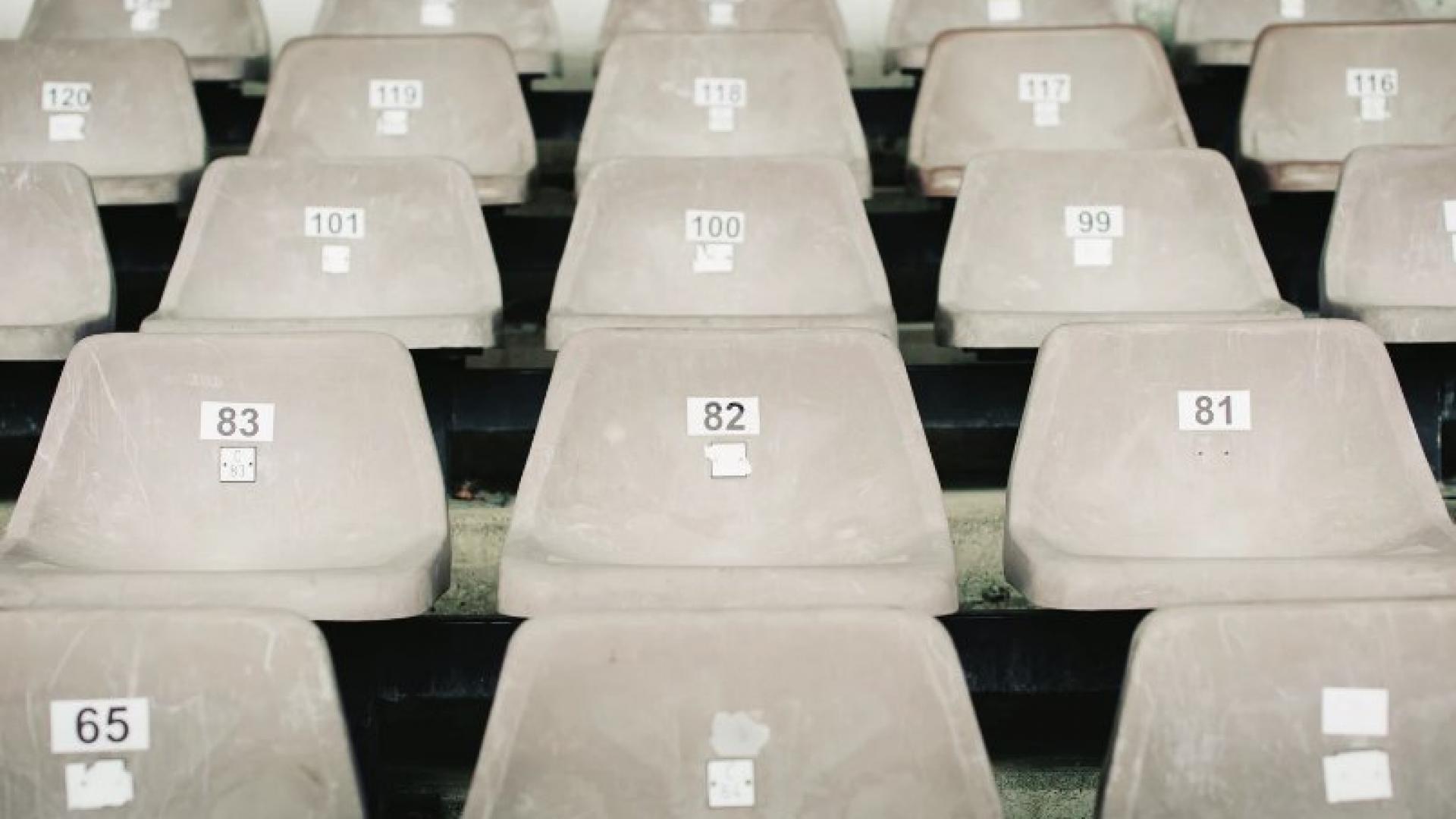With a new year comes an appetite for new challenges. Charity events teams will want to make the most of a potential burst in public enthusiasm for participating in fundraising events. As GDPR approaches, getting the public engaged with events is also a great way of building relationships in a changing data protection environment. It is a relatively rare opportunity for your supporters to get the word out on your behalf as event participants talk to their potential sponsors about your charity.
However, nfpSynergy's Charity Awareness Monitor (CAM), our quarterly survey of public views and perceptions of charities, revealed in July 2017 that 57% of the public had not sponsored anyone to take part in a charity event in the last 12 months. This is an increase from 36% back in July 2010.

With fundraising events still a key part of the fundraising landscape, this growth in inactivity on the sponsorship front seemed surprising. We also discovered that the most common way that the public had been asked when they had last chosen to sponsor was “in person via a sign up sheet” (55%). With the proliferation of social media and growth in platforms such as Justgiving, we were curious as to why this old-fashioned approach was still proving so effective.
Although statistics can highlight a trend or a fact, they can’t always give us the full picture. So, with this in mind, we trialed a new methodological approach. We got back in touch with specific people who took part in our Charity Awareness Monitor (CAM) survey, and investigated their survey answers through in-depth explorative interviews.
Whilst we already do a lot of qualitative research (interviews, focus groups, online communities etc.), this new approach was unique; we could speak in depth to the very same participants who had answered the original survey.
Here are three of the key findings:
1. Watch out for sponsorship fatigue. The public is noting the proliferation of sponsorship requests – some of our interviewees spoke of an increase in requests in recent years, suggesting that they have become more selective as a result.
In the old days I think I would have sponsored everybody for everything that I was asked, and nowadays there’s huge volumes of demands, so I have to be more limited in my responses, positive responses anyway.
Male, 55-64
2. Personalisation is key at all levels. With the above in mind, we also found that the more personal and tailored the approach, the more likely sponsors are to respond (and vice versa). This perhaps explains the relative lack of success of social media asks emerging from our survey results. As one interviewee explained:
On social media you can pretend not to see it or pretend to forget about it
Female, 25-34
Although this doesn’t discount the power of social media, it highlights the importance of giving your participants the tools to personalise their sponsorship ask. In addition, event participants notice if their relationship with the charity is impersonal, with one describing the contact received in the run up to the event as ‘robotic’. So the more that you can do to make your participants feel valued (including supporting them in tailoring their asks), the better the chance of creating positive associations with your charity across the board.
3. Link brand and cause to your event to make it memorable. We discovered that whilst our interviewees could often recall and talk in detail about a range of events, the charity and even the cause was often lost (with a tendency to assume the cause is cancer if you can’t remember!)
Sometimes the charity behind the event, often is quite veiled…I know these big events but I can’t remember what charity it’s for
Female, 55-64
One opportunity to overcome this is by ensuring that the brand personality or even the cause shines through in the event itself. An events participant gave an example of this when talking about SSAFA’s Big Brew Up event:
As (SSAFA) is about one to one counselling so it is actually resocialising people so the idea of coffee mornings for dealing with people coming out together to me would be entirely right…the action is entirely associated with what the charity tries to do.
Female, 55-64
Finally, despite these challenges, investment in this area continues to be important as fundraising events can still create powerful experiences; from a sense that “you’ve done your bit” through to increased “community cohesion”. Ultimately, a positive, personal and memorable experience – whether as sponsor or participant – holds potential to lead to sustained recall and engagement with the charity.
A full report on our quantitative and qualitative fundraising events research will be released to CAM clients in the coming weeks. If you are a CAM client you can now commission your own qualitative add-ons research, digging into the CAM results with in-depth interviews. Examples could include interviews with specific kinds of supporters or with those who express a certain belief or attitude in the survey results.
If you are interested in finding out more about CAM survey please download the briefing packs attached, or contact Jo: jo.fischl@nfpsynergy.net should you have any questions about the survey at all.
Have you differentiated
Have you differentiated between big national events like Race for Life etc and those put on by small local groups. I wonder if the difference comes back down to the charity that is going to benefit. A local ask to local people still seems to elicit a positive response, especially if those taking part are also local.

